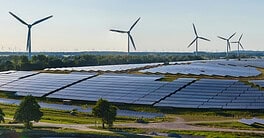The slowdown in developed economies will be offset by growth in emerging markets says the IMF in its new World Economic Outlook.

Moderate expansion in most emerging market and developing economies will help global economic output stabilize at around 3.6% in 2020 and beyond, offsetting weakness in major advanced economies, according to a new report by the International Monetary Fund (IMF).
Escalating US-China trade tensions, economic difficulties in Argentina and Turkey, monetary tightening in larger advanced economies, policy uncertainty in the eurozone and the UK contributed to a slowdown in the second half of 2018 and into 2019, the IMF said in its new World Economic Outlook (WEO).
Global economic growth is projected to further decline to 3.3% in 2019 before returning to 2018 levels (3.6%) next year, according to the WEO, released ahead of the IMF and the World Bank’s spring meetings in Washington, D.C. this week.
The negative 2019 revision—which is 0.2 percentage point lower than what the IMF predicted in January—reflects the IMF’s downgrade of major economies in the euro area, Latin America, the US, the UK, Australia and Canada. The WEO now projects a slowdown in growth for 70% of the world economy in 2019. The global 2020 forecast is unchanged from January.
Avoiding a recession in the short term, the growth of China’s and India’s economies will drive the global rebound after 2020according to the IMF, which predicts emerging market and developing economies to rise just below 5% in the medium term.
However, global economic risks remainas uncertainty still weighs on China’s effective expansion rate and its future trade relations with the US. A no-deal Brexit scenario with border disruptions would further hurt the UK and the eurozone’s economy, according to the WEO.
“This recovery is precarious and predicated on a rebound in emerging market and developing economies, where growth is projected to increase from 4.4% in 2019 to 4.8% in 2020,” IMF Chief Economist Gita Gopinah says in a blog post titled “the Global economy: a delicate moment”.
“It (the recovery) relies on an expected rebound in growth in Argentina and Turkey and some improvement in a set of other stressed developing economies, and is therefore subject to considerable uncertainty,” Gopinah adds.
In advanced economies, growth will slow in 2020 to 1.7% from 1.8% this year, despite a partial recovery in the euro area, as the impact of US fiscal stimulus eases and growth in the region moves toward its potential, the economist adds.
The baseline global forecasts for 2019 and 2020 assume that a Brexit deal with the European Union is reached this year and the UK gradually adjusts to the new regime.
The outlook for emerging Asia remains favorable (up 6.3% in both years), with China’s growth projected to slow gradually from 6.3% in 2019 toward sustainable levels (6.1% in 2020).
Latin America, the Middle East, North Africa, part of sub-Saharan Africa and the Pakistan region however show a mixed midterm outlook, partly clouded by subdued commodity prices and civil strife or conflict.
In 41 emerging market and developing economies, accounting for close to 10% of global GDP in purchasing-power-parity terms and with total population close to 1 billion, per capita incomes are expected to drop further below those in advanced economies over the next five years, the IMF predicts.
“This is a delicate moment for the global economy. If the downside risks do not materialize and the policy support put in place is effective, global growth should rebound,” the IMF chief economist says.
“If, however, any of the major risks materialize, then the expected recoveries in stressed economies, export-dependent economies, and highly-indebted economies may be derailed,” Gopinah adds.
| Projections | ||||
|---|---|---|---|---|
| 2018 | 2019 | 2020 | ||
| World Output | 3.6 | 3.3 | 3.6 | |
| Advanced Economies | 2.2 | 1.8 | 1.7 | |
| United States | 2.9 | 2.3 | 1.9 | |
| Euro Area | 1.8 | 1.3 | 1.5 | |
| Germany | 1.5 | 0.8 | 1.4 | |
| France | 1.5 | 1.3 | 1.4 | |
| Italy | 0.8 | 1.0 | 0.5 | |
| Spain | 1.4 | 1.2 | 1.4 | |
| Japan | 0.8 | 1.5 | 1.9 | |
| United Kingdom | 1.4 | 1.2 | 1.4 | |
| Canada | 1.8 | 1.5 | 1.9 | |
| Other Advanced Economies | 2.6 | 2.2 | 2.5 | |
| Emerging Market and Developing Economies | 4.5 | 4.4 | 4.8 | |
| Commonwealth of Independent States | 2.8 | 2.2 | 2.3 | |
| Russia | 2.3 | 1.6 | 1.7 | |
| Excluding Russia | 3.9 | 3.5 | 3.7 | |
| Emerging and Developing Asia | 6.4 | 6.3 | 6.3 | |
| China | 6.6 | 6.3 | 6.1 | |
| India | 7.1 | 7.3 | 7.5 | |
| ASEAN-5 | 5.2 | 5.1 | 5.2 | |
| Emerging and Developing Europe | 3.6 | 0.8 | 2.8 | |
| Latin America and the Caribbean | 1.0 | 1.4 | 2.4 | |
| Brazil | 1.1 | 2.1 | 2.5 | |
| Mexico | 2.0 | 1.6 | 1.9 | |
| Middle East, North Africa, Afghanistan, and Pakistan | 1.8 | 1.5 | 3.2 | |
| Saudi Arabia | 2.2 | 1.8 | 2.1 | |
| Sub-Saharan Africa | 3.0 | 3.5 | 3.7 | |
| Nigeria | 1.9 | 2.1 | 2.5 | |
| South Africa | 0.8 | 1.2 | 1.5 | |
| Low-Income Developing Countries | 4.6 | 5.0 | 5.1 | |
| Source: IMF, World Economic Outlook, April 2019. | ||||



